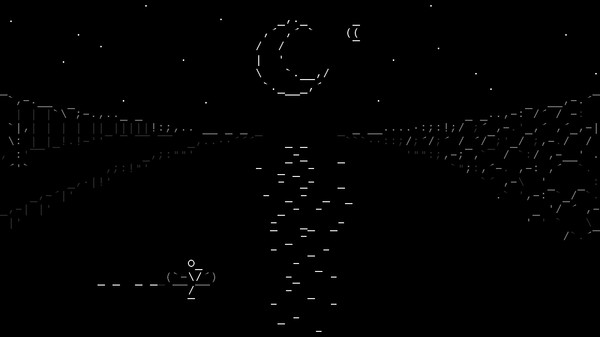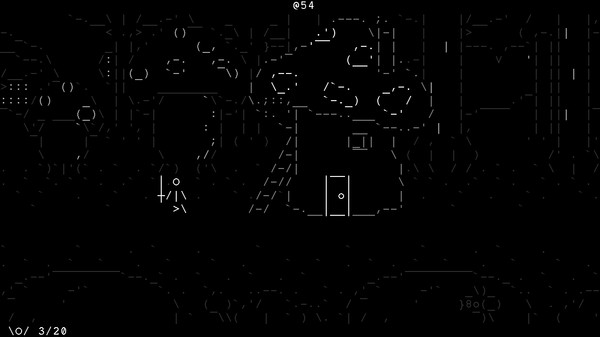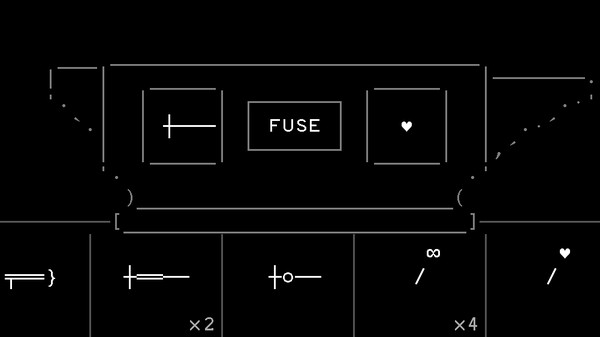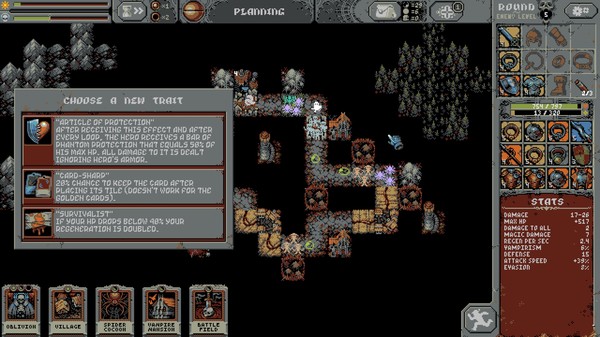I like Atomicrops. I have played quite a bit of it, done quite a few cleared runs, a bit of achievement hunting, and I’ll probably keep playing it even after I write this review for a bit. Like the synopsis says, it’s a really solid roguelite. There are a few areas of the game’s design I disagree with, but they feel more like choices, not flaws, and if you like games like Binding of Issac, or presumably, Enter the Gungeon (Okay, I haven’t actually played much Enter the Gungeon, but that’s what it reminded me of), I feel like you’ll enjoy Atomicrops.

Cool, so now that I’ve put the lede first, let’s actually talk a bit about the game.
I’ve tried and failed to write this article about Atomicrops several times now, all with the intention of having it out and ready this Wednesday Thursday Friday. Given that I started it writing it about a week, you would think this would have been easy. And it would have been, except for a tiny problem called “I thought Atomicrops was going to be high paced twitchy version of something like Stardew Valley, and not a roguelite.” Second disclosure: I’ve never played Stardew Valley or Harvest Moon. Slime Rancher is probably the closest I’ve ever come to a traditional chill farming game.
So yeah, I went in expecting an entirely different genre of game. In both you can acquire farm animals, grow plants, and get married, but what that means in terms of actual mechanics is incredibly different, as are your goals. In something like Slime Rancher, you’re free to play at your own pace. Even if you lose all your health, there really isn’t a game over in any traditional sense.

In Atomicrops, if you lose all your health, you die, and you’ll have to start fresh. There is a secondary currency used for small, permanent upgrades called cornucopias, but most of said upgrades are pretty minimal.
Here’s a brief overview of the anatomy of an Atomicrops run. The goal of an Atomicrops run is to simply survive all 4 seasons, and then to beat the final boss in the nuclear winter season. Each season consists of three days. Days have a day/night cycle. During the day, crops you’ve planted are invincible, and cannot be harmed. At night, they can be eaten/attacked by various enemy types, and waves of enemies will spawn in to try to attack them. On the night of the last day of a season, you’ll have to fight a boss.
What you’ll notice, though, is that I haven’t described anything that would require you to actually engage in agriculture. With one fairly big exception, “winning” doesn’t technically require you to farm crops for Cashews, the game’s currency. You could, in theory, just spend every day doing nothing to run out the day timer, fight through the waves at night, and rinse repeat your way to victory. This would theoretically mostly work.

So why go into the trouble of growing serpentine roses, potatoes with more eyes than most monsters from the Cthulhu mythos, and excessively overexuberant peas? Well, growing and harvesting crops gets you Cashews and score, but it also feeds into your end of season meter. And secondly, it lets you buy and upgrade weapons.

Let’s talk about the weapons in the game for a second, because one of my big gripes relates to them. Almost all the weapons are cool, powerful and fun. They have single path of upgrades that give them more damage, and also boost their utility. (For example, the flamethrower can water crops after getting enough upgrades.)
They also have a chance to break after you complete a day, requiring you to get a brand new one. And when I say chance, I’m talking about a something like a 98% chance by default on most characters. There is a character that can bring it down to a 48% chance, which is still pretty high. (This decreases as you unlock post-run carryover upgrades. Regardless, break chance is never a happy number.)
So here’s why I consider it a gripe, and not necessarily a flaw: having powerful weapons to take on the end of round bosses isn’t strictly speaking necessary, but it does make them much easier to fight. Trying to take on giant mechs, UFO’s, and a spider the size of a house with a literal peashooter is incredibly difficult. So you’re motivated to save up a pile of cashews to buy and upgrade a weapon prior to a day in which you’ll fight a boss, which means you’ll need to farm, which means you’ll need seeds, which means you need to explore, but harder areas have tougher enemies, so you’ll need a better weapon for that, too….
You get the point. Weapons breaking is a core part of the loop of the game, forcing you to go fight for seeds, upgrades, and farm animals, along with one-use powerups (pigeon scrolls). You do this by leaving the central area near your farm, and clearing out camps of marked enemies. Once you clear a camp, you get a reward.

The point is, though, if you could just upgrade a single weapon, and keep it through a whole run, the system would fall apart pretty quickly, and kill a lot of the pressure that the game generates.
Outside of that, I really don’t have any big gripes about Atomicrops. The game also does one thing really well, though kind of subtlety. So I wanna call that out, and talk about it a bit.
Atomicrops handles item effect stacking and resolution really well. A variety of the passive pickups you get have effects like “When X occurs, Y occurs,” and the game handles it super gracefully. As an example, there is an item that causes weeds to do a blast of damage to nearby enemies when cut down. There’s also an item that causes killing enemies to cut nearby weeds. If you end up getting these together, shooting and killing a nearby enemy can turn into a wonderful chain reaction of exploding weeds and shredded enemy packs.
From what I’ve seen, this works for almost every item combo that you would expect it to in the game. Farm animals can trigger items that would proc based off their respective text, and so on. And it’s what makes Atomicrops such a good roguelite. You’re given a limited amount of items to choose between during your run, and spotting and knowing about various synergies can make or break a run. Some items can seem lackluster at first, such as the ability to harvest weeds for small amounts of cashews, but combined with rapid weedcutting, tractors, or chickens, can turn out to be incredibly useful.
Atomicrops is an incredibly solid run and gun roguelite. It’s not perfect. There’s a fairly limited number of bosses, and the game’s controls can be frustrating at times. But the fantastic way that synergies are handled, the number of builds that can be created, and how weapons that are just fun to use (even if they break way too easy) make it sort of sleeper hit for me. It’s not the game I was expecting, but it’s honestly probably more fun than what I thought I was getting into.
(Oh, and the art for each of the irradiated fruits and veggies is also great. Weird without being Binding of Issac levels of discomforting.)
Atomicrops is $15 on Steam or the Epic Games store, and a bunch of other consoles I won’t list here. This review is based on the PC version. Friendly reminder that even if you do loath Fortnite and the stupid dances it has made the youth partake in, EGS gives a higher percentage to developers than Steam.



















